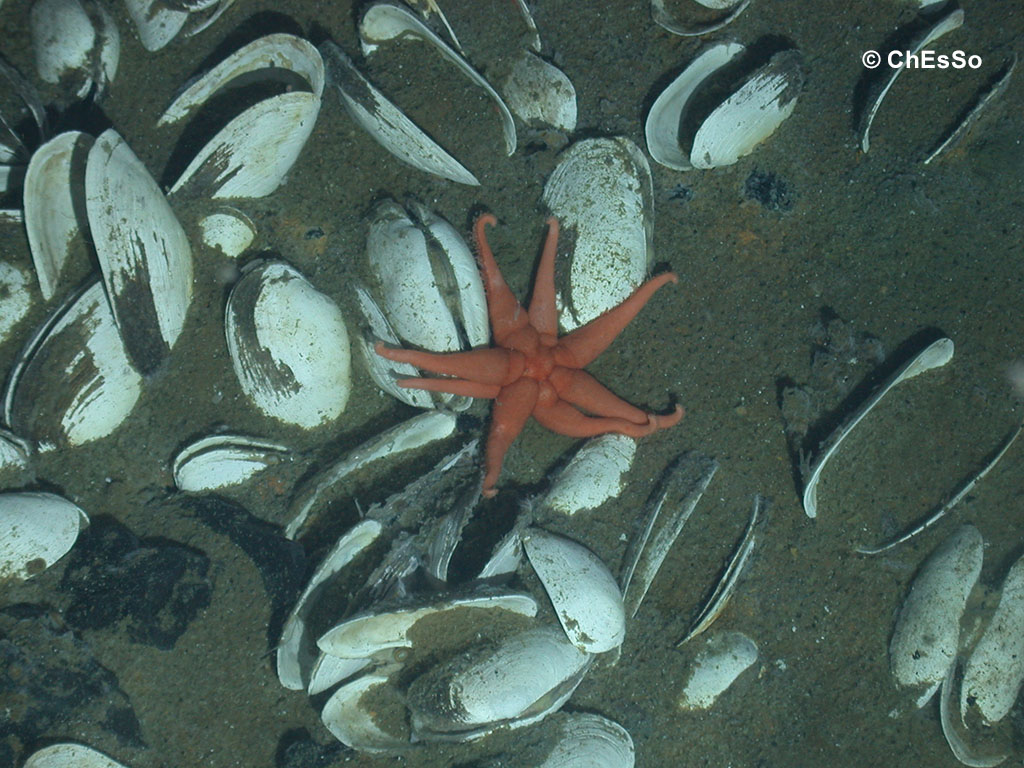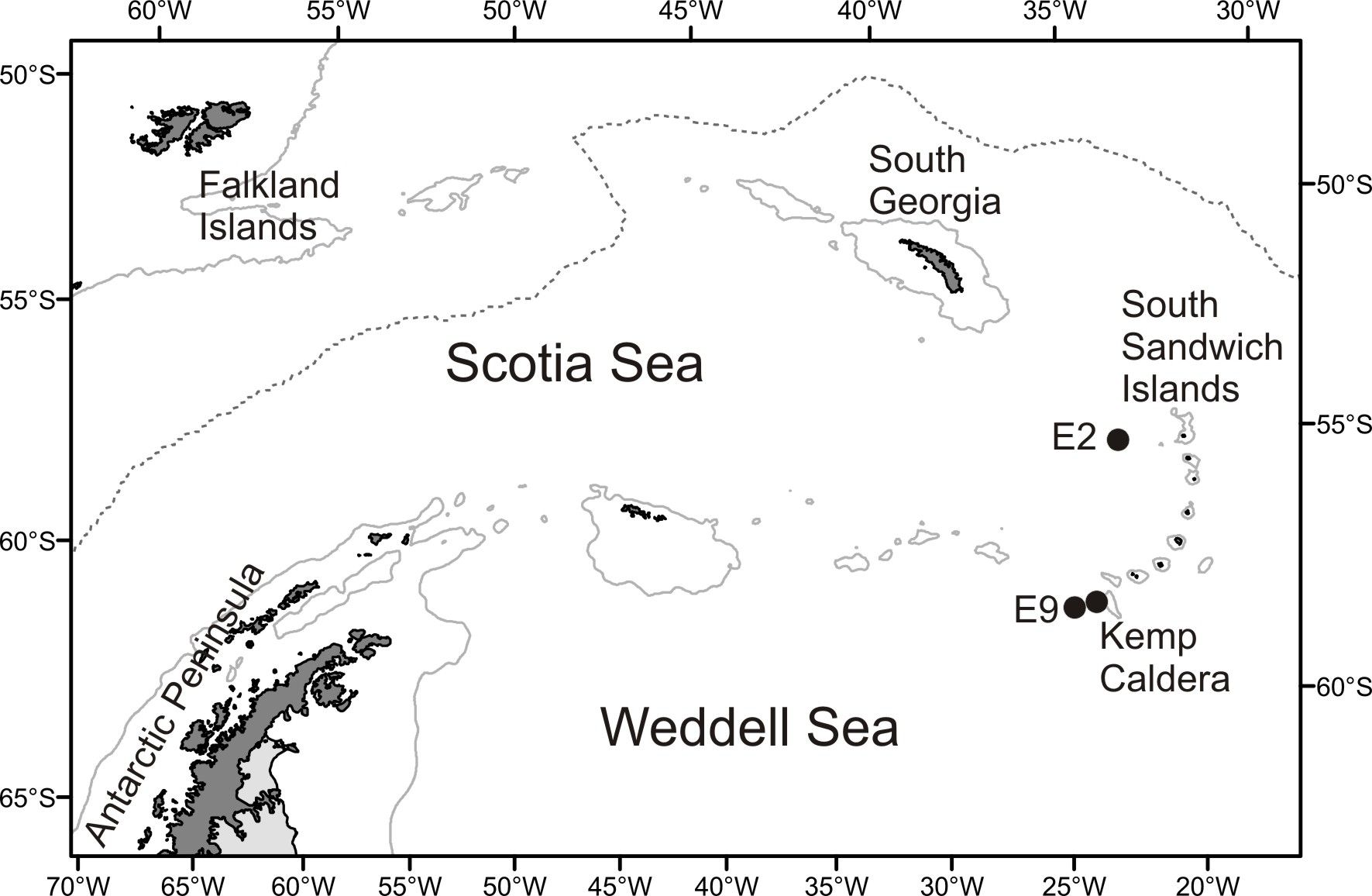NEWS STORY: New starfish identified
First new family of starfish discovered in hydrothermal vents
A new family of deep-sea starfish has been discovered living in the warm waters around a hydrothermal vent in the East Scotia Ridge in the Southern Ocean, Antarctica.
Unlike most starfish that have 5 arms, specimens from this family (known as Paulasterias tyleri) have six or even eight. This extraordinary starfish group is white to pinkish in colour, has particularly fleshy limbs, and is the first to be found in a hydrothermal vent ecosystem.
Publishing this month in the Zoological Journal of the Linnean Society an international team of scientists report that this is the first new family of starfish to be identified since 2002. Its nearest relation lives more than two thousand miles away in the Ross Sea, on the opposite side of Antarctica, and also in the north Pacific Ocean.
The discovery was made during deep sea scientific research cruises to study the unique habitats in Antarctica’s Southern Ocean. NERC’s remotely operated underwater vehicle Isis, deployed from RRS James Cook (operated by the National Oceanography Centre), located the starfish living between 1,400 and 2,600 metres beneath the surface. The starfish feed on barnacles and the remains of yeti crabs.
Dr. Katrin Linse from British Antarctic Survey (BAS) is a member of the research team and co-author of the paper. She says:
“This discovery of unique, new habitats in the hydrothermal vents on the East Scotia Ridge is tremendously exciting for scientists. Finding a single species of star fish is uncommon compared with the many different species we usually see living together in the shallower waters around Antarctica. We were really excited to find the first starfish reported to live near hydrothermal vents — and even more so when it turned out to be completely new to science. It is possible that there are yet more undiscovered vents hidden in the deep waters of the Southern Ocean.”
Dr Mah, who is the paper’s lead author, says:
“The discovery of Paulasterias tyleri represents a fantastic breakthrough which shows that not only are there many new species (and indeed whole new families) remaining to be discovered in the deep sea, but that they are associated with novel environments. Now that we have identified this species, we can continue with work to learn more about its ecology and importance to deep sea ecosystems.”
The new starfish family has been named after Professor Paul Tyler, of the University of Southampton, UK, in recognition of the work he has done on deep-sea biology.
The research was funded with a grant from the Natural Environment Research Council (NERC).
NOTES:
Hydrothermal vents are areas of the sea floor where water heated by volcanic activity under the seabed gushes out. The temperature of the water there is several degrees warmer than ambient ocean temperatures and is known to support a range of specially adapted marine life.
Vents are often deep in the ocean so the animal communities that inhabit them don’t use the sun for energy. Chemicals in the hot waters form the basis of the food chain.
The research paper — Description of a new family, new genus and two new species of deep-sea Forcipulatacea (Asteroidea), including the first known sea star from hydrothermal vent habitats by Mah CL, Linse K, Copley J, Marsh L, Rogers A, Clague D and Foltz D is published by the Zoological Journal of the Linnean Society this week.

